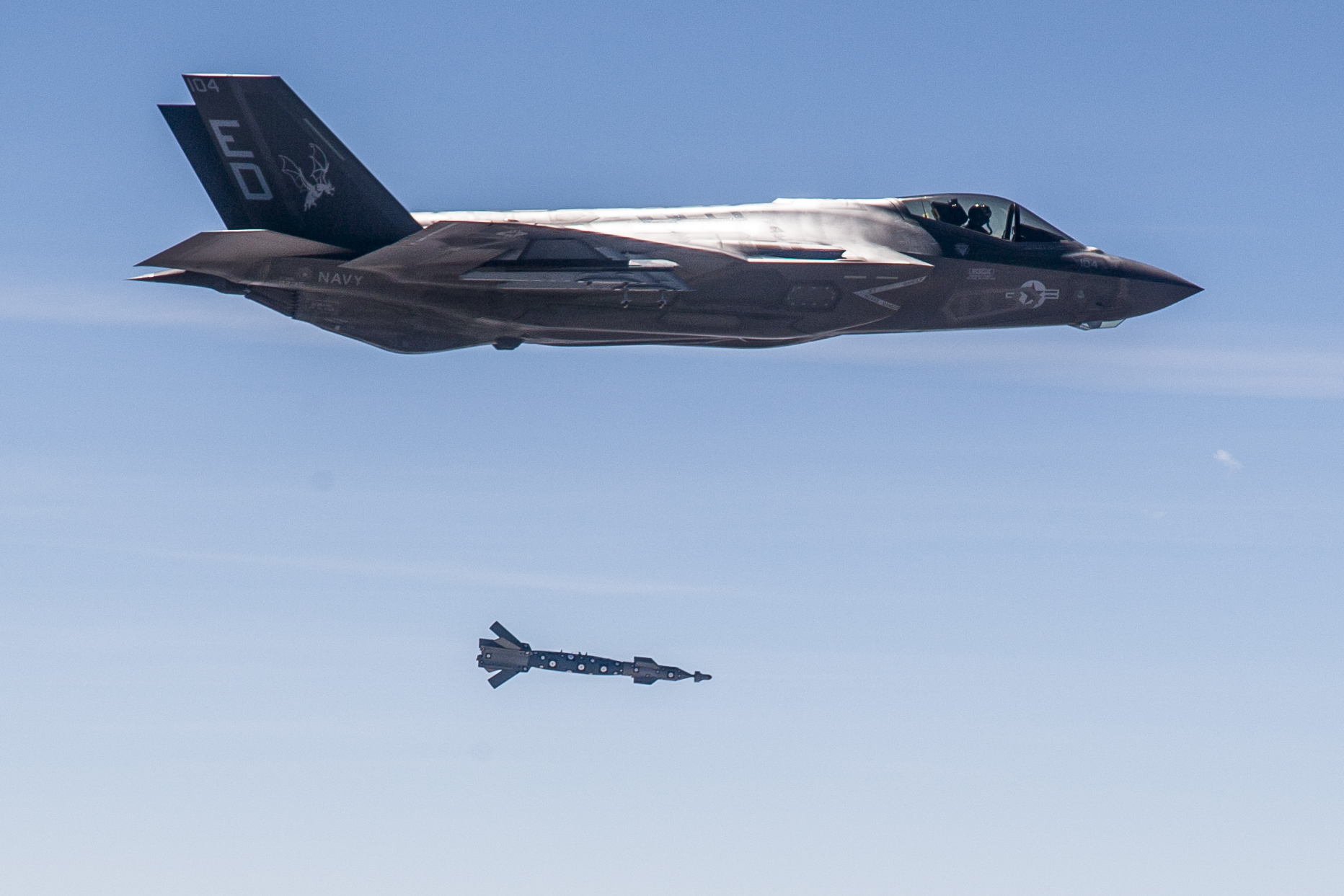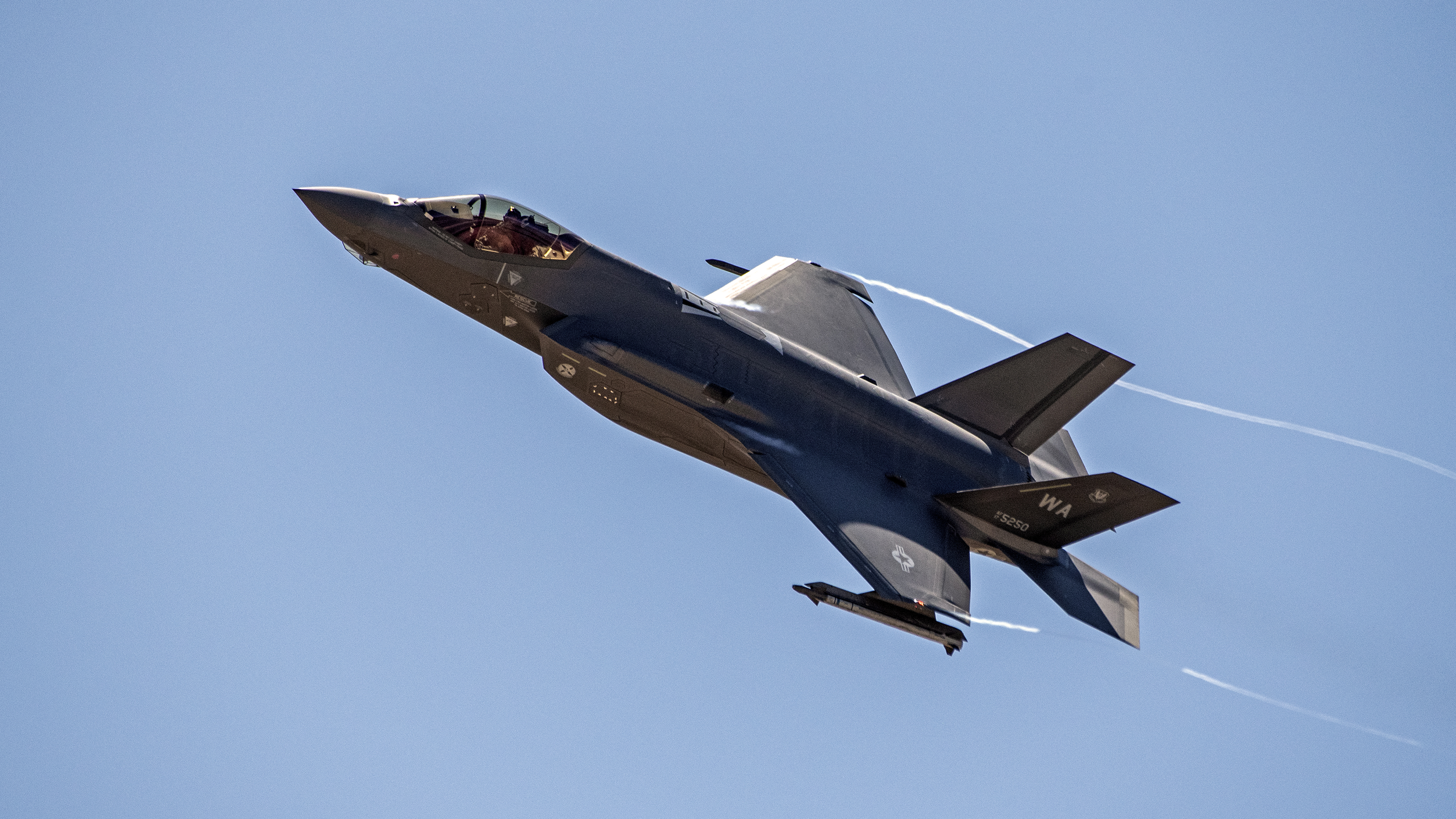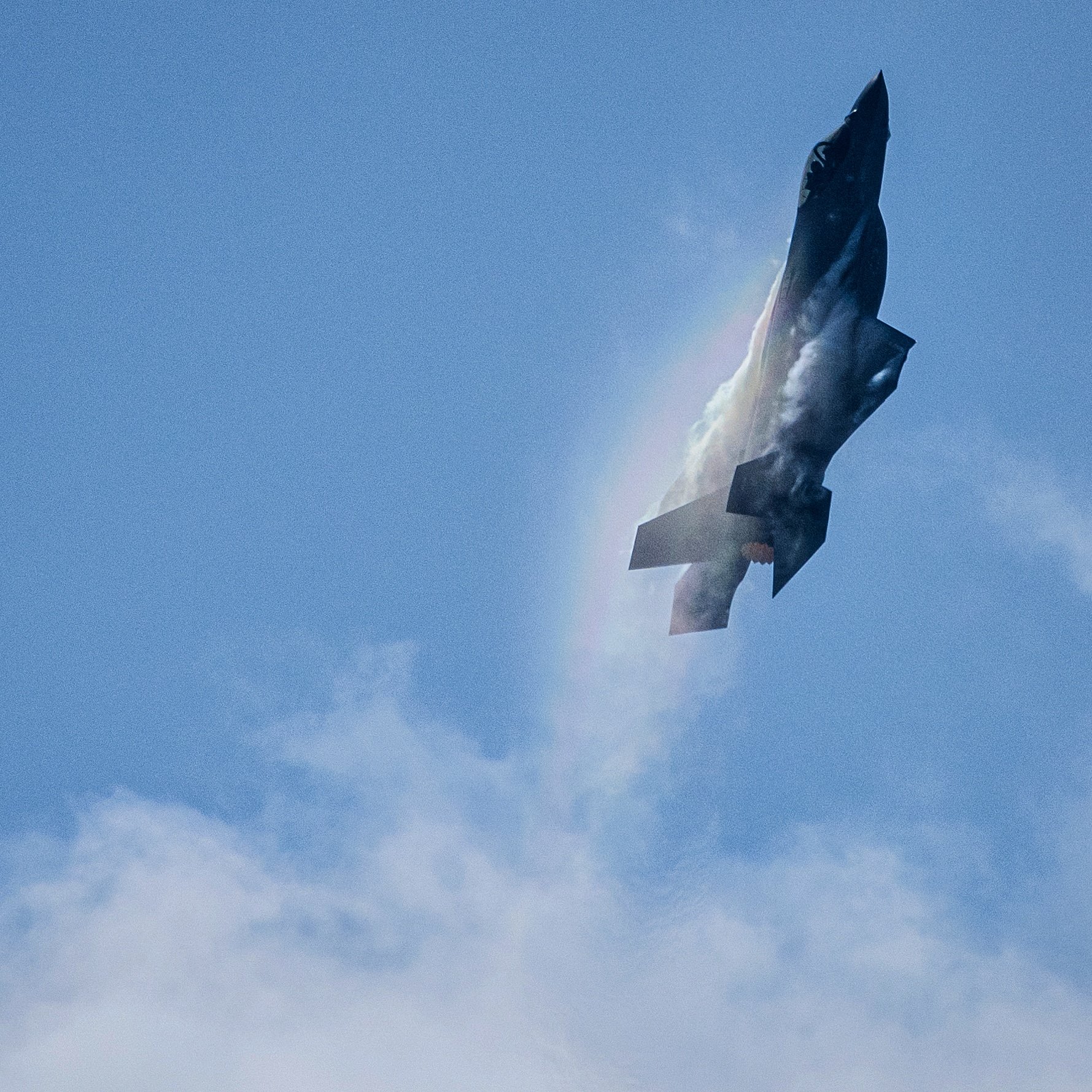The world’s “most advanced” fifth-gen multirole fighter jet has had its share of troubles. From affordability issues to breathing problems for pilots, the F-35 has been a sensitive and controversial program for the US military.
A recent investigative report by Defence News sheds light on the debate in US defense circles on whether the fighter is struggling to fly at supersonic speeds.
The pilot who flew one of these fighter jets for a significant test flight at supersonic speeds has disclosed exclusive insider details of the decade-old mission.
Speaking to Defence News, Billie Flynn, the Lockheed Martin test pilot revealed that the pilots will be able to take the F-35 to its furthest limits of speed and altitude — most likely without any permanent damage to the aircraft.

This view is in contrast to the Pentagon’s 2019 report, in which it highlighted that flying at supersonic speed for prolonged time threatens “to erode an F-35’s stealth coating and damage key antennas embedded in the tail of the aircraft”.
The F-35s in question are a vertical takeoff and landing F-35B variant made for the US Marines and a carrier-based F-35C variant for the US Navy.
Pentagon’s Supersonic Test
Defence News had reported last year that the Pentagon had imposed a limit on the number of seconds a pilot can fly the F-35B and C variant in supersonic mode.
Those limits were imposed after two separate tests in 2011 where the “B” model incurred “bubbling and blistering” of its stealth coating and the “C” model suffered “thermal damage” to the tail boom and horizontal tail, the report said.
Pentagon after the tests concluded that an F-35C can only fly at Mach 1.3 for 50 cumulative seconds, meaning that a pilot cannot clock 50 seconds at that speed, slow down for a couple of seconds and then speed back up. Similarly, the F-35B can fly for 80 cumulative seconds at Mach 1.2 or for 40 seconds at Mach 1.3 without risking damage.
The fighter jet is otherwise marketed as capable of flying at Mach 1.6.

Flynn noted that by abiding by those time restrictions, the US military ensures the F-35 lasts the entirety of its planned service life and that the fleet isn’t overly-taxed during normal training and operations.
The design deficiencies are classified by the Pentagon as two separate ‘Category 1’ deficiencies, representing the most serious type of technical issue.
Interestingly, the US Department of Defense has concluded that the issue isn’t a serious problem and remains unresolved. The F-35 Joint Program Office explained that “the operator value provided by a complete fix does not justify the estimated cost of that fix,” Defense News reported.
However, several military experts argue that the limitations on the afterburner, when combined with another deficiency pertaining to the plane’s maneuverability, could prove deadly in close-combat scenarios.
They have also shown concerns that the inability to fly at supersonic speed could prevent naval operations from carrying out supersonic intercepts.
The Pilot’s ‘Confession’
Lockheed Martin’s test pilot Flynn told Defense News that the damages occurred during the supersonic test flight have to be placed within some context as they didn’t occur in a vacuum.
For instance, flights for the B model involved aggressive maneuvering at the edge of the aircraft’s flight envelope for hours at a time. “Nobody is going to do [that] tactically,” he said, adding that there’s not a combat scenario where that is going to happen.
Moreover, while walking around the aircraft and inspecting the jet for damage post-mission, Flynn didn’t remember seeing the blistered stealth coating or thermal damage noted in the Pentagon’s deficiency report.
“I don’t know if I really ever saw much after a flight. I just knew that our engineers had told us about [the problem],” he said.
“So an engineer whose specialty is structures would see that it would be hotter than they predicted, which would lead them to tell us: If this airplane is going to last 40 years long, then we have to manage this exposure,” he added.
The Issue Of Supersonic Speed
Supersonic flight is not a major feature baked in F-35 tactics; the capability would be used in cases when it is absolutely necessary to intercept another aircraft or in emergency situations, said Bryan Clark, an analyst with the Hudson Institute and a retired naval officer.
Military experts have supported the view that fifth-generation fighter jets play a fundamentally different role than fourth-generation jets.

While F-35s are capable of flying at supersonic speeds, stealth remains the key factor. The stealthy F-35 is designed to carry out penetrative missions and destroy enemy targets without detection.
Flynn noted that the F-35 doesn’t have to rely on supersonic speed to penetrate a contested area the way most legacy jets do.
“The notion that you have to stay away from someone, or you have to run someone down [because] they see you, is the wrong context for a fifth-generation fighter but is entirely the issue for a legacy F-14 Tomcat, F/A-18 Hornet, F-16 Viper, Eurofighter Typhoon,” he said.




